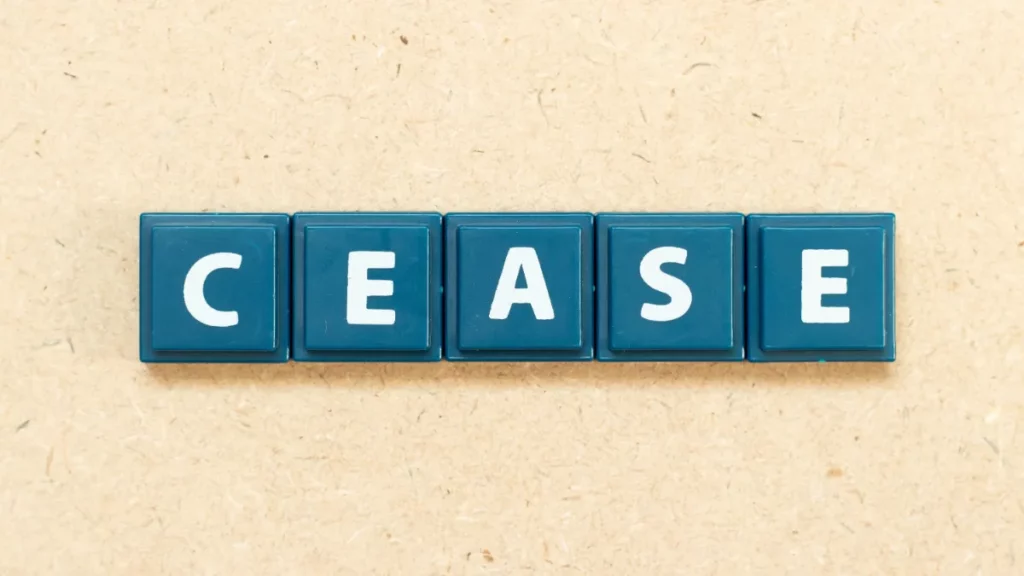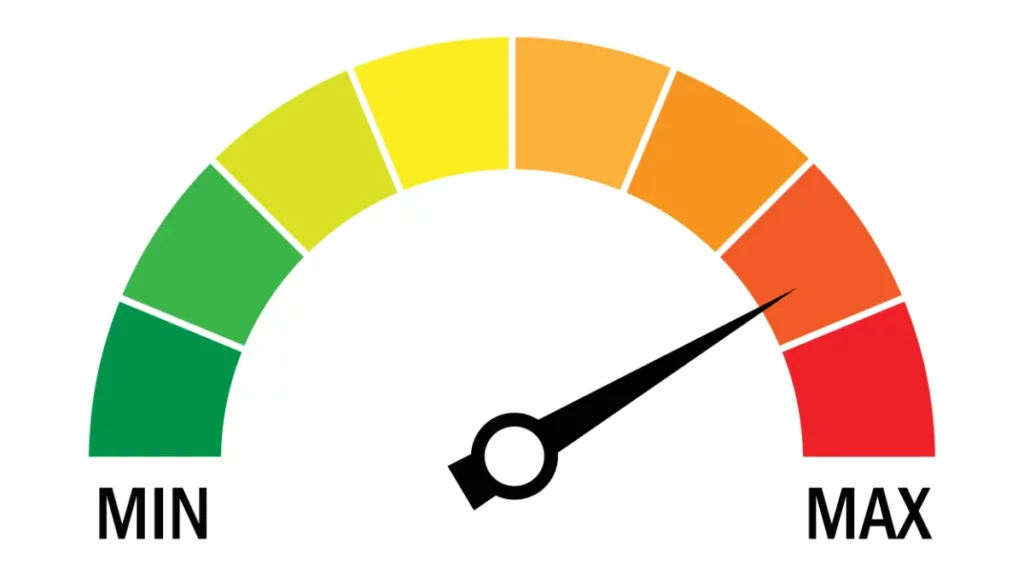
This site is reader-supported. We may earn a small commission if you make a purchase from one of our partners.
If you are in the middle of a civil dispute and need relief, you may have wondered: “Are Cease and Desist letters effective?”
The answer is “Yes!”
Cease and Desist letters are often used to stop unwanted behavior or activity. They can be highly effective when used properly, making it a quick way to get what you want, all while avoiding costly litigation.
In this article, we’ll review when you should consider sending a Cease and Desist letter, what makes these letters effective, and what mistakes you should avoid.
Ready? Let’s go.
What is a Cease and Desist Letter?

A Cease and Desist letter is a formal demand that someone stop an action that is causing you harm. These letters typically include a breakdown of the offending activity, the damage it is causing, and a threat of legal action if things don’t change.
It’s important to remember that a Cease and Desist letters aren’t binding, legal documents. They are type of demand letter sent from one party to another designed to change or stop specific behavior. The ultimate goal of your letter should be to notify the recipient of the legal consequences of their actions, all while avoiding the need to hire a costly attorney or law firm.
However, while these letters are not legally binding, they can be the first step towards getting a permanent or temporary injunction (aka. a Cease and Desist Order) through further legal action.
When is a Cease and Desist Letter the Right Option?

A Cease and Desist letter can be effective in many different scenarios. Here are the main situations where a person or party should consider sending a Cease and Desist letter:
Friendly Negotiations Have Failed
While a mutually acceptable solution is always preferable to cold, formal demands, it’s not always possible to make it work. If you’ve tried to resolve an issue informally or through friendly negotiation, but the problem behavior continues, a Cease and Desist letter can be an effective next step.
You Want to Create a Paper Trail
If your dispute is ongoing and you think you may end up in court, a formal Cease and Desist letter can help you create a paper trail. This will show the judge that you’ve made a formal attempt to resolve the issue without needing to take up limited court resources.
Just remember to send your letter via registered mail. This will ensure you have an accurate record of sending the letter and that the recipient has received it.
You Have No Relationship With The Offending Party
If the person or business you are dealing with is a stranger, they may be more likely to respond to a formal Cease and Desist letter. After all, if they don’t know you, they have no reason to trust that your informal request is anything more than an empty threat.
You Need to Take Immediate Action
There are some situations where time is of the essence, and you need to take immediate action. For example, if someone has stolen your copyrighted material and is using it to make money, you’ll want to act quickly to get them to stop. In these cases, a Cease and Desist letter may be the best way to get relief fast and help everyone avoid legal repercussions.
You Want To Avoid A Lawsuit
While a Cease and Desist letter isn’t the official start of formal legal proceedings, it can show them that you’re serious about protecting your rights. While some may look at this as a scare tactic, it’s essential to let the other party know you are serious and are willing to escalate into a civil case.
How To Make a Cease and Desist Letter Effective

Now that we’ve gone over situations where a Cease and Desist letter may be the right option let’s look at how to make your letter as effective as possible.
Here are some tips:
Be Clear and Concise
When writing your Cease and Desist letter, it’s essential to be clear and concise. You want to ensure the other party understands precisely what you’re demanding. The last thing you want is your letter to be ignored because it’s too long or confusing.
Get to the point quickly and be as specific as possible. This will help ensure your letter is taken seriously and increase the chances that the other party will comply with your demands.
Be Polite But Firm
While it’s essential to be clear and concise, you also don’t want to appear too aggressive. After all, the goal of your letter is to resolve the issue without resorting to legal action.
With that in mind, avoid any language that could be seen as threatening or hostile. This will only make the other party less likely to comply with your demands.
Make Reasonable Demands
If you’re making demands that are too extreme, the other party is likely to ignore your letter altogether. That’s why it’s important to make sure your demands are reasonable.
For example, if you’re demanding that the other party pay you $100,000 for copyright infringement, they will probably not take your letter seriously. On the other hand, if you’re asking them to take down a blog post that’s using your copyrighted material, they’re much more likely to comply.
Get Legal Help
If you’re unsure how to draft an effective Cease and Desist letter or if your situation is particularly complex, it’s a good idea to consult with an attorney. They can help you navigate the legal process and ensure your letter is as effective as possible.
Bad Choices That Make Cease and Desist Letters Less Effective

While a Cease and Desist letter can effectively resolve a dispute, there are some situations where they can backfire. Here are some examples of bad choices that can make your letter less effective:
Sending a Threatening Letter
If your Cease and Desist letter is too aggressive or hostile, the other party will likely ignore it altogether. Remember, the goal of your letter is to resolve the issue without resorting to legal action.
With that in mind, avoid any language that could be seen as threatening. This will only make the other party less likely to comply with your demands.
Making Unreasonable Demands
The other party will likely ignore your letter if your demands aren’t realistic. That’s why it’s important to ensure your demands are reasonable and actionable.
For example, if you’re the victim of social media defamation and you ask the other party to take out a full-page ad with a retraction in the New York Times, you aren’t likely to have much success.
Failing to Follow Up
If the other party doesn’t respond to your Cease and Desist letter, it’s important to follow up. This shows that you’re serious about resolving the matter and will continue to pressure them to take action.
If you don’t hear back after a reasonable time, consider sending a second letter or hiring an attorney.
Failing to Proofread
Nothing screams amateur like a formal letter littered with spelling and grammar mistakes. Before you send your Cease and Desist letter, proofread it carefully. This will help ensure that your letter is clear and concise. It also shows the other party you’re serious about resolving the issue.
Sending an Incomplete Letter
If you don’t include all the necessary information in your Cease and Desist letter, the other party will likely ignore it. That’s why it’s crucial to include all the relevant details, such as your contact information and the specific infringing material.
If possible, get a second set of eyes on your letter before sending it out the door. You only have one chance to make a strong first impression.
Finally, we also recommend Grammarly, an online tool to help ensure your letter is perfect.
What to Include in a Cease and Desist Letter

To be effective, your Cease and Desist letter should include the following information:
Your Contact Information and Date
Include your name, address, phone number, and email address in your letter. You also want to ensure you include the date it was written/sent so that you provide them a reference for any demands or timelines in your letter.
The Recipient’s Contact Information
Include the name, address, phone number, and email address of the person or business you’re sending the letter to.
A Detailed Explaination of the Problem
Include a detailed description of the problem that has prompted the letter. For example, if you are writing a letter regarding social media harassment or defamation, include the specific platform, dates, and messages that are problematic.
Bonus points if you include specific screenshots in an appendix at the end.
Details on the Harm Caused
Include a list of the specific details on the harm caused by their actions. This could include financial losses (in the case of intellectual property infringement) or emotional distress (in the case of harassing behavior or defamation).
Your Specific Demand
Include a clear and concise statement of what you want the other party to do. Do not beat around the bush. Leave no doubt as to what your expectations are. Unclear demands are a recipe for an ineffective letter.
A Reasonable Deadline For Compliance
Include a reasonable deadline for the other party to comply with your demands. Typically this would be “immediately,” but your situation may be unique.
If extenuating circumstances make immediate compliance impossible, be reasonable but fair, and you will have a better chance of compliance.
Your signature
Include your signature or that of your lawyer/representative. Signing the letter in ink is preferred, though a service like DocuSign is also a solid option.
Conclusion
A Cease and Desist letter is a powerful and effective tool that can help you resolve many types of disputes. In sending such a letter, you make it clear that you are willing to pursue legal action if needed to get relief.
However, it’s essential to remember that a Cease and Desist letter is not a magic solution. It’s important to be thoughtful about when and how you use it.
Do you need an effective Cease and Desist Letter? Start your letter now!

Wes Talisman is a freelance journalist who helps answer common legal questions for everyday people. He’s never won a Pulitzer Prize, but he does write a stellar Cease and Desist letter.